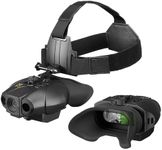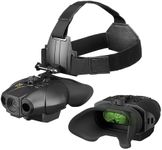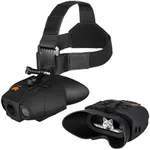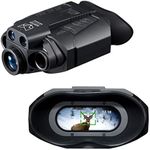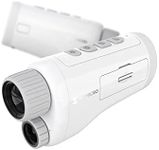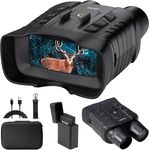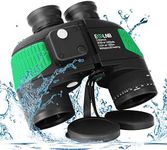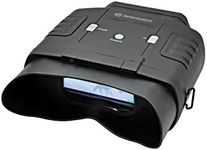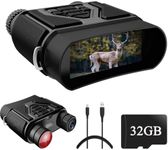Buying Guide for the Best Night Vision Binoculars
When choosing night-vision binoculars, it's important to understand the key features that will affect your viewing experience. Night-vision technology allows you to see in low-light conditions, making it ideal for activities like wildlife observation, security, and nighttime navigation. The right pair of binoculars will depend on your specific needs, such as the level of darkness you'll be operating in, the distance you need to see, and how portable you need the device to be. By understanding the key specifications, you can make an informed decision that best suits your requirements.GenerationThe generation of night-vision technology refers to the level of advancement in the image intensifier tube used in the binoculars. This spec is crucial because it determines the clarity, range, and overall performance of the device. Generations range from 1 to 4, with higher numbers indicating more advanced technology. Gen 1 is the most basic and affordable, suitable for casual use in low-light conditions. Gen 2 offers better resolution and is good for more serious users. Gen 3 provides excellent performance and is often used by professionals. Gen 4 offers the best performance with superior clarity and range, ideal for specialized applications. Choose the generation based on how clear and far you need to see, and how often you'll be using the binoculars.
MagnificationMagnification indicates how much closer the binoculars can make an object appear. This is important for determining how far you can see and how detailed the image will be. Common magnification levels range from 2x to 10x. Lower magnification (2x-4x) provides a wider field of view and is easier to stabilize, making it suitable for moving targets or scanning large areas. Medium magnification (5x-7x) offers a balance between field of view and detail, ideal for general use. Higher magnification (8x-10x) provides detailed views of distant objects but can be harder to stabilize and may require a tripod. Consider what you will be observing and how steady you can hold the binoculars when choosing magnification.
Objective Lens DiameterThe objective lens diameter is the size of the front lenses of the binoculars, measured in millimeters. This spec is important because it affects the amount of light the binoculars can gather, which is crucial for night vision. Larger diameters (e.g., 50mm or more) allow more light to enter, providing brighter and clearer images in low-light conditions. However, larger lenses also make the binoculars heavier and bulkier. Smaller diameters (e.g., 20mm-40mm) are more compact and lightweight but may not perform as well in very dark environments. Choose a lens diameter based on the balance between portability and the level of darkness you'll be operating in.
Field of ViewField of view (FOV) refers to the width of the area you can see through the binoculars at a specific distance, usually measured in feet at 1,000 yards. This spec is important for determining how much of the scene you can observe at once. A wider FOV is beneficial for tracking moving objects and scanning large areas, while a narrower FOV provides more detail on a specific target. Wide FOV (e.g., 300 feet or more) is ideal for activities like wildlife observation or surveillance. Narrow FOV (e.g., 200 feet or less) is better for focusing on specific subjects. Consider what you'll be observing and how much of the scene you need to see at once when choosing the FOV.
Infrared IlluminatorAn infrared (IR) illuminator is a built-in or attachable light source that emits infrared light, which is invisible to the naked eye but can be detected by night-vision devices. This spec is important because it enhances the performance of night-vision binoculars in complete darkness or very low-light conditions. Some binoculars come with a built-in IR illuminator, while others may require an external one. Built-in IR illuminators are convenient and ensure the device is ready to use in any lighting condition. If you plan to use the binoculars in extremely dark environments, ensure they have a good quality IR illuminator to enhance visibility.
